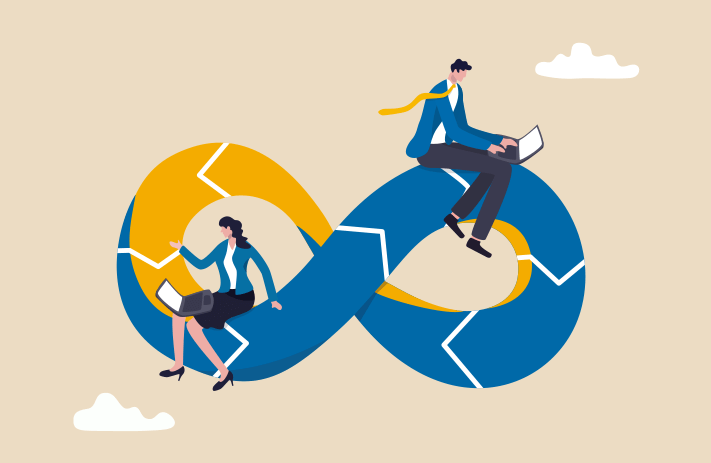
Click the button to start reading
How Successful CEOs Stay Organized Every Day of the Year
If you’re an aspiring CEO or future leader—or you’re already there and wondering how the heck other CEOs make it look so easy—then this is the read for you. We’re going to share effective, actionable advice for staying organized and at the top of your game while running your business.
We’re going to cover a whole range of solutions, habits and routines which top-performing CEOs use to stay on the ball every single day. We’ll also spend some time looking at how software and tools can be (and should) be used to facilitate elite organization.
Of course not every one of these tips will apply to your specific circumstances. In fact, some might directly conflict with one another—and that’s the point. Every CEO and every company is different, with varying home lives and personalities and drivers. So, creating an article claiming to have one solution that worked for all CEOs would be insane.
As busy as CEOs usually are, identifying just 1-2 helpful, actionable tips from this list could transform your daily routine and save precious minutes or hours every single day. Let’s get into them.

Embrace asynchronous communication
Any organizational transformation for CEOs can begin with emails. The way most of us interact with emails results in a truly devastating cascade of effects across the rest of our workload.
The reality is that staying organized means consistently getting important jobs done throughout the day. This requires sustained focus, of which poor email habits are the mortal enemy.
If you constantly have one eye on emails, then your brain can’t truly focus on anything else. It is in a perpetual cycle of interruption. At the heart of it, you need to become comfortable being “less responsive” to emails.
This doesn’t mean answering fewer emails or fobbing people off—we know you can’t do that. It simply means scheduling dedicated time for emails and nothing else.
Why “email time” is absolutely essential for CEOs
Many successful CEOs schedule dedicated time for emails—as little as once per day (or once per week if you’re Tim Ferriss) or more commonly 2-4 times per day. Here’s why:
1. It relieves the mental pressure. If you know you’re going to filter and respond to all your emails at 2pm, you can feel comfortable “ignoring” them right now. You can become more fully invested in your present tasks.
At the same time, clearing out this mental anxiety around “being available” will give you clearer thoughts, more energy, and better engagement with your work. After clearing your emails, you benefit from this clarity for the rest of the day too—until your next planned session.
2. Faster and better replies. By dealing with your entire inbox at once, with no other distractions, is multiple times more efficient than doing it during the “in-between” moments in the day. You’ll make better decisions (since you’re in the zone) and be able to filter relevant and irrelevant messages more quickly.
A useful side effect of scheduling email replies is that colleagues, clients and others know when you’ll reply. They won’t expect or bother you over instant responses, and some “urgent” emails might never be sent; instead, the sender will simply deal with the issue rather than wait. All of this adds up to a huge relief of burden and an improved ability to stay organized throughout the day.
We’ve focused on emails here, but the exact same strategy can be applied for instant messages and even voice calls. The crucial point is to handle communications on your terms, at the time most suitable for you.

Be mindful during “in-between” moments
The natural state of being for many CEOs is calling shots and putting out fires 24-7. Every available minute has you jumping between activities:
- Bathroom break? Check the emails!
- Eating lunch? Squeeze in a call!
- Making coffee? Check our social media!
So here’s the somewhat controversial advice we’ve heard from numerous successful CEOs—stop.
The problem with context switching (see “Themed Days” section for more on this) every 30 seconds is that your brain maintains a high base level of fogginess and fatigue that builds over the day. Say you finish a meeting and have 5 minutes until the next. If you go to the toilet, answer 3 emails, make a call and check your LinkedIn IMs, your brain is whirring at 110% on things completely unrelated to the upcoming meeting.
If instead you leave your phone at the desk and go to the loo unplugged, and even sit for 1-2 minutes doing nothing while you wait in the boardroom, your brain can effectively “catch its breath” and be ready to perform at its peak during the meeting.
There’s no need to do this all day (combining activities is part-and-parcel of the job for many CEOs) but exercising this more regularly—perhaps before your most valued meetings—could pay dividends in the long run.

Hire an executive assistant or VA
You’re the Chief Executive Officer of a company. Hopefully a fast-growing and successful one! Doesn’t matter whether you’re a by-the-seat-of-your-pants startup or a global leader—your time is too valuable for mundane tasks.
For companies in the early growth stage (or small companies in general) a virtual assistant is worth their weight in gold. You can contract them for a limited number of hours per week, and work out the exact roles they should perform. This typically includes:
- Administrative work—This is the big one: accepting, declining and scheduling meetings; answering and directing phone calls; travel arrangements; calendar management; filtering emails or instant messages.
- Financial—Depending on the company, VAs can take over invoicing, bills, transferring funds, monitoring payroll, making purchases and tracking expenses.
- Promotional—Many executives use their VA to schedule and post content on their social media, deal with press, engage with followers, and generally manage their online presence
The reality is that most highly-qualified virtual assistants are the kind of people that thrive under pressure, can learn new skills easily and are nutters for organization. If you’re head of an established large company, a full-time executive assistant is probably more suitable.
While more expensive, your EA is likely to have massive experience and be proactively saving you time and stress every hour of the week. They’re more likely to become strategic partners who can provide valuable insight on everything from C-suite agenda to organizing the team retreat.
At every stage of your business’s growth, investing in an assistant will win you time (the scarcest commodity you have) and improve the quality of your work, since your brain is no longer lumbered with the responsibility for essential, but mundane, duties.

Optimize your meetings
The stats vary, but the average US knowledge worker has 60 meetings per month, more than 4 days of working time on average. More than a third of these meetings add “no value to the organization” and the stats are naturally even worse for executives.
Time spent in unnecessary meetings is time lost on other crucial work. It pushes back your schedule and wreaks havoc on your organization. It’s a significant contributor to the late nights and weekend work. CEOs should start by implementing a culture of essential meetings only—at least as far as your time is concerned.
Consider sharing this graphic with any executives or managers that want to book your time:
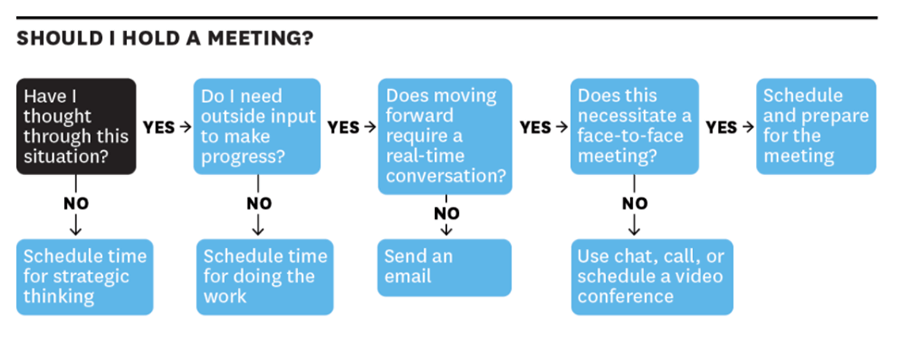
The next step is making sure that either:
- Meetings are the necessary length—Most meetings are scheduled in arbitrary 15, 30 or 60-minute increments. They also take far longer than necessary. Encourage your organization to schedule realistic times for meetings: if it’s a small but crucial subject, scheduling a 7-minute meeting is absolutely okay.
- Your part comes first—You want to participate as much as possible, but the reality is that your time is often needed elsewhere. If a meeting is covering multiple subjects, try to run through the areas where you will contribute first so you can then leave the meeting and get other work done. If this sounds brutal, it is. But it’s also key to staying as organized and effective as possible day-to-day.
It is also common to have your assistant attend meetings on your behalf, either to share your input or, more likely, note the important points of the meeting and run you through them quickly at another time. As long as the essential details are passed on (if required—which they often aren’t!) then you may not have to attend meetings at all.
Meetings are a source of frustration and exhaustion for many CEOs, whether they realize it or not. Don’t be afraid to defy the status quo and prioritize your time—after all, it’s quite simply more important to the business than anyone else’s!
Consider “theming” your days
Themed days is a relatively young practice popularized hugely by Jack Dorsey, CEO of Twitter and Square—the social media giant and financial services unicorn respectively.
As an extreme example of CEO of two enormous global companies, it’s unlikely that many CEOs have more on their plate than Dorsey. And since Dorsey is known to take one day off every week—as well as practicing mindfulness and exercising every day—while successfully managing these companies, there might be a thing or two to learn from him.
Dorsey attributes a large part of his success to theming his work days. The idea is to maximize his focus and quality of work across both businesses. It’s similar to scheduling “email time”, but on a grander scale. Dorsey themes his days as follows:
| Monday | Directional meeting and operational meetings. |
| Tuesday | Product, engineering and design. |
| Wednesday | Marketing, growth, and communications. |
| Thursday | Partnership and developers. |
| Friday | Company and culture. |
| Saturday | Day off |
| Sunday | Strategy, recruitment, feedback and reflection. |
And every day he works half for Twitter and half for Square—thankfully most CEOs don’t have the added complication of switching companies.
It’s not just Dorsey that loves this approach, either. Famed strategy coach Dan Sullivan themes his days a little differently, categorizing them in one of 3 ways:
- Focus Days—Making progress towards an important business result.
- Buffer Days—Catching up on email, making phone calls, holding internal meetings, delegating tasks, processing paperwork etc.
- Free Days—Complete disconnection from work. No calls, no emails, no nothing.
So what are the benefits of themed days?
On a personal level, theme days limit context switching—the problem where jumping between different types of tasks annihilates our productivity and focus. With our ever-more-fragmented work days and instant messaging, staying focused has never been harder.
And when you’re the CEO, you have many different types of work all vying for your attention all the time. So—themed days. Grouping like-tasks together is known to be extremely effective for getting things done efficiently. Doctors have been known to schedule all patients with similar conditions on the same day, for this same reason.
It alleviates the mental burden of thinking, “Oh, I should really get the product testing done first…” because you know that product testing is happening on Wednesday, not today. You can mentally park so many high-pressure tasks because, quite simply, they’re scheduled later in the week. Without context switching, your ability to execute on these tasks also improves considerably.
Benefits across the team or organization
On a deeper level, theme days establish a rhythm and expectation of productivity and attention within the team. If the marketing team knows it’ll be 7 days before they can get your input, they’ll make more autonomous decisions; employees will send fewer unnecessary messages and emails because they know they won’t get seen soon. Accountability shoots up.
Just as important, teams know they only have 7 days to make demonstrable progress on their current projects—you will be back in 7 days and this is an excellent motivator. In tandem with optimizing meetings (on the days you have them!) and scheduling deep work (next section) this powerful practice can be transformational for improving organization for CEOs.
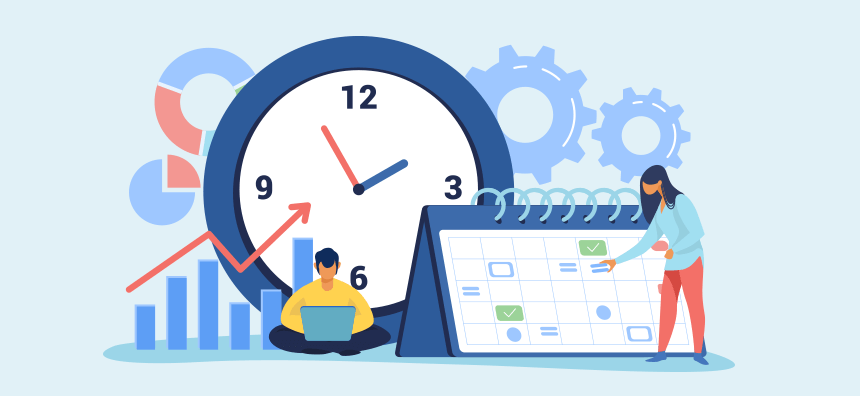
Schedule deep work
We know it’s not realistic for busy CEOs to cut out all of the noise all of the time. However, there’s an unavoidable truth that even on themed days, if you’re constantly answering messages, replying to emails, scrolling your phone or anything else—even if it’s still related to your theme day—it’s going to cause backups, delays and inefficiencies in your day.
And some work simply cannot be pushed back or delayed. Work that is critical to the future of the business that only you can do. In order to get this work done, you need to schedule time wholly and exclusively for these tasks.
How to schedule “no interruption” time
We recommend scheduling blocks of 1 to 2 hours. During this time you will work with 100% concentration on your highest-priority tasks. And if it’s a challenge, stick with it! This is a deliberately long focus period to counteract our default mode of working in 3-4 minute sprints in-between distractions.
After a little adjustment, anyone can focus for 2 hours—without responding to “pressing” comms, without answering knocks on the door, and without checking Twitter on our phones.
What gets done during this time will mostly be “core work” that isn’t collaborative. It’s work that only you can do. Most of us are just not used to deep focus, but after the short adjustment period, you’ll be astonished at how much more you get done, how little your communications suffer (if anything, you’ll have fewer redundant messages to deal with) and how much you enjoy the work.

Make time for self-care
This is the one that virtually no CEO ever wants to hear: don’t work so hard you accidentally kill yourself.
More than 9 in 10 executives reach burnout; that state of total exhaustion that’s brought on by long-term, unresolvable work stress. While most CEOs know the massive health risks of burning out and struggling through exhaustion, they kind of ignore it too.
The problem isn’t necessarily the long hours of the intensity of the work—it’s how you manage your health in tandem with the work. There are 3 immediately powerful ways to preserve your mind and body better, without necessarily working less.
The simplest recommended step is simply taking breaks.
The power of taking a break
It is well-established that breaks—both long and short—have a direct correlation with productivity, clarity of thought and our ability to invent solutions. They’re also crucial for giving mind and body a chance to recuperate during intense working days.
Three ultra-accessible types of break are:
- Low-intensity exercise (e.g walking, climbing stairs)
- Eating good food without distractions
- Napping
Light exercise is the most obvious. If you’re not elevating your heart rate and igniting the nervous system, your body will simply degrade. Don’t forget your brain is part of that body you’re neglecting. During the working day, something as simple as regularly walking around or taking the stairs just gives your body a little more life.
Another crucial part of managing the body is eating foods which actually help you become more energetic and healthy. Chugging soda and eating sugary snacks will kill your body and your mind.
Napping can be controversial, even though it’s proven to improve alertness and cognitive function and even though most CEOs are chronically underslept! Seriously: create a dark space at the office where you can grab 20 minutes (for alertness and energy levels) or 60-90 minutes (for cognitive function) and embrace it.
CEOs need to believe the truth that resting and taking care of their health not only directly benefits the company, it also makes them a more effective and valuable executive.

Moderate exercise every day
Another powerful antidote to burnout is upping the exercise intensity on a daily basis.
Even the CEOs with the most soul-crushingly long hours still, somehow, seem to make time for exercise. It’s one of the few ultra-beneficial habits that most of us can actually stick to. Whether it’s a 30-minute Peloton first thing in the morning, lifting weights at lunch or jogging on the treadmill with telly on, exercise is the most effective elixir for sustaining daily performance.
But how does this relate to organization?
Exercise empties out our heads. When we push our bodies hard, all thoughts of work, responsibilities, and problems get shoved to one side. After, when we’re recovering, there’s a renewed sense of clarity. We’re better able to see whether and how to prioritize our time, what we need to focus on, and what in our schedule can take a back seat.
All of this enables CEOs to more effectively organize their time and priorities. It keeps burnout at bay and acts like a triple-shot coffee straight to the brain, making us feel empowered, purposeful and centered.
Making room for “me time”
An essential component of staying focused, on-track and organized over the long-term is to maintain a rigorously disciplined personal time schedule. Most CEOs spend around six hours per day awake and not working. Around half of this is spent with family and the rest on a combination of exercise, entertainment, chores or doing just about nothing.
This is crucial on many levels. All CEOs are humans first and business owners second, even if they don’t realize it all the time. Making time for friends, family and hobbies enables mental wellbeing and provides a well-rounded purpose in our lives. In a work context, this refreshing personal time also makes CEOs better able to engage with employees and colleagues without becoming distant or detached.
Rigorously enforcing your “me time” routine might not have a visible instant payoff. But over the long term it is paramount for your health and, ultimately, your business.

Get (a lot) more sleep
Thanks to social media, we’re all conditioned to believe that high-performing CEOs are superheroes that need 4 hours’ sleep and leave all those 6am-alarm slackers in their dust. Fortunately, most of this garbage comes from Joe Nobody on the internet who has never actually run a company.
In the words of Matthew Walker, the world’s preeminent researcher and expert on sleep:
“The number of people who can survive on 5 hours of sleep or less without any impairment, expressed as a percent of the population and rounded to a whole number, is zero.”
CEOs aren’t superheroes: they’re driven and disciplined human beings that need as much (if not more) sleep as everyone else. Chronic sleep deprivation (that is, fewer than 6 hours per night) causes us to generate solutions to problems more slowly, less accurately, and less often. Our work rate naturally reduces and we start prioritizing simpler and less-essential tasks. Poor sleep significantly impairs decision making and creative thinking, and makes us more irritable, more vulnerable to stress, and amplifies emotional responses. For leaders, bad sleep directly correlates with lower charisma, self-control, and tolerance of others.
The ability to function on limited sleep is not the same as performing at or near your best. CEOs have incredibly commanding schedules; in order to work through that schedule every day, you need to be well-rested. In fact, your high-intensity lifestyle probably means you need more than average sleep in order to recover.
While it might feel productive sending emails at 10pm or setting the alarm for 5-6 hours after you go to bed, you’re probably performing between 30% and 80% of your best. Get the recommended 7-9 hours a night and, yes, you might tackle slightly fewer tasks during the day, but your performance will be substantially better. You’ll have more creative ideas and better judgement and take your company in a superior direction.
Investment in sleep should be non-negotiable.

Consider daily meditation
unning a company is incredibly stressful. There is no end to the high-pressure decisions, short timelines, supplier and customer issues, the financial burden—like we said, it’s endless. In order to stay on top of everything, more and more CEOs are swearing by mindfulness practice.
Meditation (one method of practicing mindfulness) has been shown in studies to relieve anxiety and, therefore, boost resilience and performance under stress. CEOs need to keep any panic, fear or despair closely under wraps. Regular meditation allows you to retain your composure, find calm in the storm, and stay focused through the most stressful situations.
Whether it’s overcoming hiccups in a major transaction or managing some market disaster, composure and clarity of thought are your most powerful weapons. Using an app like Headspace to meditate for just 3-10 minutes per day (perhaps during those in-between moments we discussed earlier) probably won’t feel like anything special—but when the chips fall, your ability to calmly navigate the wreckage will speak volumes.
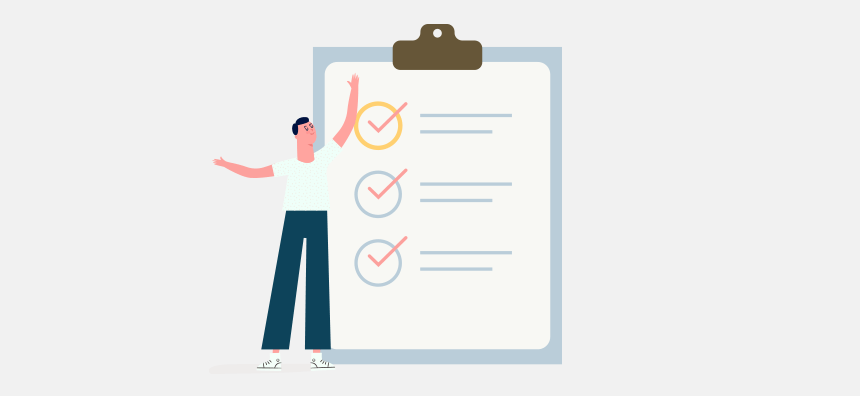
Use bullet journaling
One of the most popular recent trends for improving organization is bullet journaling. This is a simple and effective way to track the past, monitor the present, and plan the future. It’s a place to manage all the balls you’re constantly juggling in one elegant, pen-and-paper solution.
(You could definitely do bullet journaling digitally, but using pen & paper forces you to slow down and stay concise—which is integral to the process)
Everything from upcoming events to to-do lists, birthday present ideas, business ideas, shopping lists, your habit trackers, employee feedback, how you’re going to prank Dan at the Christmas party…it’s all right there, in your bullet journal.
The beauty of bullet journaling is that it replaces the mountain of sticky notes and the dozens of phone reminders. It allows you to purge your mind of busy details until you’re ready to deal with them. Some CEOs swear by bullet journaling for the way it helps them organize their thoughts and stay present—both within and outside of work. Much like some other techniques we’ve discussed (namely scheduling deep work and asynchronous communication) this is all about alleviating the burden of stress and putting it somewhere else.
Somewhere it will be dealt with, but just not quite yet.
(There’s an awesome video by the creator explaining in simple terms how it works in just 4 minutes—check it out!)

Lean on your team
Any CEO that wants to have serious control over their time—and avoid working dawn-to-dusk every day of the week—needs to master delegation.
One of the biggest traps CEOs fall into is believing that no one else is capable of doing a certain task. And occasionally that’s true; the reason you’re the CEO is because of your specific abilities. But you also have to justify your investment in more junior staff. There are two sides to this:
- You don’t have time to do everything, so you need to “let go” of a lot of tasks and accept the results—even if they’re worse than what you would have produced.
- Your people were hired because they can do some jobs better than you. Give them the responsibility to prove it.
Accepting these two ideas and proactively offloading work from your plate to theirs is guaranteed to help you take back control of your schedule and stay organized. If there are tasks you currently manage but which, long-term, you don’t want responsibility for, give it to someone to run with. Encourage them to explore their own ideas for completing the work rather than coming to you for exact instructions.
Not only does effective delegation relieve a mental burden, it improves the ability of your staff to contribute valuable work and has a practical, visible effect on the day-to-day running of the business.

Schedule according to your body
Even if you have mastered the art of delegating tasks, getting good sleep and have hired a super-attentive assistant, you still need to schedule your day for maximum performance. Because in the end you’re still human, and your performance still waxes and wanes like the rest of us.
The trick here is understanding how your body and your brain function throughout the day. If you’re most alert and productive in the mornings, you cannot afford to waste this time on emails or “brute force” tasks. Instead, this is when you should be doing your most creative and strategic work. Later in the day when you have a crash, then you can power through with discipline and get that other work done—the tasks you can steamroll through even if your brain isn’t running at 100% capacity.
But if you get this wrong and start on your most mentally demanding work when you’re tired out, you’re going to come up with less creative and impactful solutions. Or worse, straight up bad ones. Worst of all, if you’re nowhere near “the zone” you might just procrastinate on the task and send the rest of your day and week into disarray.
Follow a “before your phone” morning ritual
It’s no coincidence that many of the highest-performing CEOs have established morning routines compared to average workers. And because they’re massively busy people, part of that routine usually involves light work such as checking emails.
A crucial element of making this habit sustainable is avoiding distractions and going “off course” first thing in the morning. For many of us, the first thing we do after snoozing our alarms is grab our phones and groggily scroll through them—and this is a painfully destructive way to do morning work.
There are two problems:
- Our brains need breaks from work. By going through a full morning routine (which might only take 20-30 minutes) then jumping into work, our brain and body will feel more energized. We’re less likely to feel tired (immediately or later in the day) and we create a functional barrier between “work life” and “home life” that’s essential over the long term.
- The quality of our decision making straight out of the bed is appalling. Like working 12-hour days without breaks, we might feel productive (because of that hard grind) but actually the brain is running at well below 100%. Probably well below 50%.
If exercise is part of your morning routine (and it should be—even if it’s a brisk 5-minute walk round the block!) this should definitely come before any phone time. Showering, breakfast, seeing the kids, meditation, making the bed—whatever it is that matters to you in the morning, get it all done in the peaceful quiet of the morning.
Then once you do turn to your phone, you’ll be ready to make faster, more effective decisions than earlier that morning. You’ll get more down and get ahead of the day. Some CEOs extend this “no phone” routine all the way to the office, but we know this isn’t practical for everyone—especially following Covid-19 where we’re spending more time at home.

Book vacations—even if you don’t have plans
The biggest problems CEOs have with vacation is that, typically, it doesn’t feel productive. “I don’t need to take time off” is an extremely common sentiment from CEOs and business owners. Plus the small fact that completely letting go of the company and its problems is terrifying for someone that’s responsible for the entire ship.
The thing is, vacation time is essential for giving leaders proper perspective on the business, their priorities, and their goals. We all know that we appreciate family most when we spend time away from them—well the same is true in business. You have your clearest thoughts and best perspective after returning, fresh, from somewhere else. You’ll notice the cracks and the possibilities. You’ll have a renewed vigour and will be able to deploy your time more effectively than ever.
Your attitude to vacation cascades
As a side note, the other thing is that vacation isn’t just about you; it’s about everyone else in the company. When you never take time away from work, it creates a culture of expectation among your subordinates. And if they take less time off, then the rung below them will feel obliged to follow suit.
Eventually, your entire organization can develop a reluctance to take vacation. Not because they’re so passionate about the work and making the company a success (like you) but because of pressure. And this pressure is a huge source of anxiety and frustration for employees, as well as a leading contributor of churn.
Enjoying your vacation also allows the company to survive without you. As soon as colleagues and clients realize you’re unavailable for a week, they’ll immediately work without you—solving problems, making decisions, and keeping things moving. This is extremely empowering for staff and brilliant for your own peace of mind; after all, the main reason CEOs don’t take vacation is because they don’t trust everything to work without them.

Swallow a frog first thing every day
If you want to stay on top of your day and smash every objective out the park, here’s an incredible piece of advice employed by CEOs all over the world: eat frogs.
“If it’s your job to eat a frog, it’s best to do it first thing in the morning. And If it’s your job to eat two frogs, it’s best to eat the biggest one first.”
This metaphor is basically saying that if you get your worst job out of the way first thing, then you have nothing to worry about the rest of the day—after all, you’ve already eaten a frog.
Even CEOs of successful companies aren’t immune to putting off distasteful tasks and finding ways to be “busy”. Breaking bad news to shareholders, having that awkward performance conversation with a colleague…
These tasks usually aren’t integral to the future of the company. Instead, the problem is that they fester and slowly build anxiety and tension in our heads. They become much bigger than they are, which makes them even more daunting to tackle. Putting off these tasks also wreaks havoc with the CEO’s finely-tuned and precise schedule because it weighs so heavily on their mind.
So whenever you make your to-do list (or your assistant hands it to you) identify the thing you want to do least, turn off your phone and just do it. You’ll feel lighter and more accomplished for the rest of the day, with that cancerous burden finally removed.
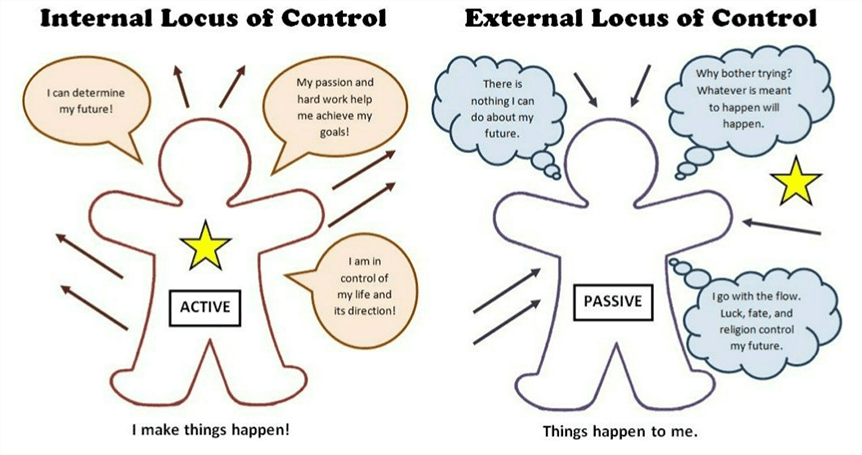
Build an internal locus of control
One powerful (and you could argue, essential) psychological characteristic of organized, effective CEOs is the internal locus of control. The “locus of control” describes the extent to which individuals feel in control of the events in their own lives.
- Those with an internal locus of control believe their own actions control what happens in their lives.
- Those with an external locus of control believe things are outside their control and “external variables” (other people, events, etc) are responsible for what happens.
Your locus of control influences how you respond to life’s challenges and your motivation to take action in response to those challenges. Here’s a more detailed illustration of the differences:
| Internal Locus of Control | External Locus of Control |
|---|---|
| More likely to take responsibility for for your own actions | Less affected by the opinions of others |
| Work best at their own pace | Strong sense of self-efficacy |
| Believe that hard work pays off | Often achieve greater success in the workplace |
| More likely to blame outside forces for their circumstances | Often credit luck or chance for their successes |
| Believe that effort isn’t always proportional to reward. | Frequently feel helpless or powerless in the face of difficult situations |
It’s worth noting that while people tend to champion the internal locus of control, neither is “better” than the other for all people. However, for a role as challenging, high-pressure and competitive as CEO, the internal locus of control is generally extremely valuable.
For some, locus of control has become synonymous with “outlook” or “personal agency”. If you’re running a serious company juggling endless tasks and priorities, you need an internal locus of control. You need to view every challenge as surmountable, to be constantly motivated by improvement and to believe your efforts will always be rewarded in time.
Conclusion
The idea of “staying organized” is very different for a CEO than for an average knowledge worker. Your input is required on such a massive array of topics, your responsibilities are many and varied and, ultimately, everyone else’s buck eventually stops with you.
Or in other words, you need to put a hell of a lot of work into not drowning in your job! Many of our tips focus on giving your brain the time and space it needs to perform effectively. We also consider physical and psychological “hacks” that help you free up more of your own time. Perhaps most critically, we reference various technological tools which can, by design, eliminate wasted effort and keep you on track.
Teamly is a multi-purpose project management software with a wide range of communication, task management and organizational tools, built by those whose background is in running successful business. If you’re ready to unleash your full potential as a well-organized CEO, consider introducing Teamly to your business—it might just change everything.




